We thought we'd celebrate the newest Pokémon release by providing a definitive crash course in this iconic gaming franchise's history. Our focus will be what's often called the "main series"—the core RPGs centered around catching, battling, evolving, and trading Pokémon—in the order they were released internationally. We'll also look at how the essential elements behind a Pokémon game have developed over time.
Pokemon "Main" Games in Order
Every Pokémon game has brought something new to the table—this usually includes new areas to explore and new Pokémon and human characters, but can also mean entirely new mechanics that can bring major upgrades to gameplay. We've compiled a quick rundown of every entry in the main series and included some notes on how each one builds upon Pokémon's core player experience.
Pokémon Red and Blue (1998)
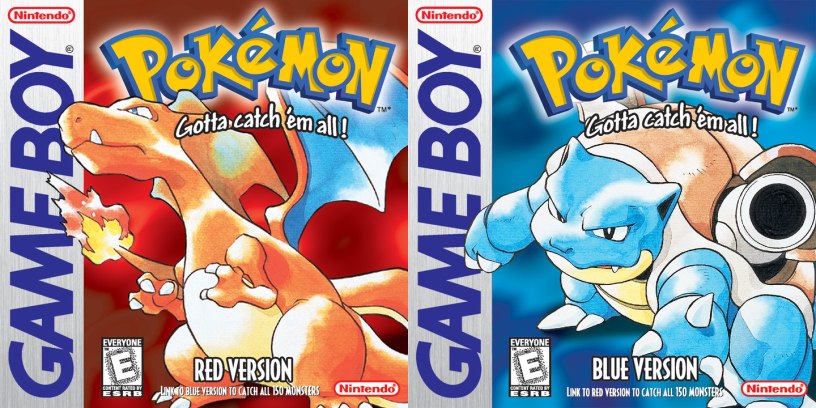
The first entries in the Pokémon franchise introduced many features now considered series staples; the player starts the game as a budding Trainer, builds a team by battling and capturing wild Pokémon, and eventually takes on the Pokémon League. 24 years later, this process remains at the core of Pokémon’s formula, and with good reason! This "if it ain't broke, don't fix it" approach has kept the series consistent over time and allowed for each iteration to develop with a familiar template.
- Introduced players to capturing, taming and training Pokémon—with some slight departures, these mechanics have remained more or less the same throughout the franchise's history
- Established gameplay fundamentals such as type advantages and evolution
- Encouraged trading and multiplayer battles, prioritizing the game's social aspects from the very beginning
Pokémon Yellow (1999)
Yellow stayed close to the formula of the originals while taking cues from the success of the anime and particularly the breakout appeal of Pikachu.
- Added new elements such as walking Pokémon, a friendship mechanic, and mini-games to make the Pokémon world more immersive—these features would return numerous times in later games
Pokémon Gold and Silver (2000)
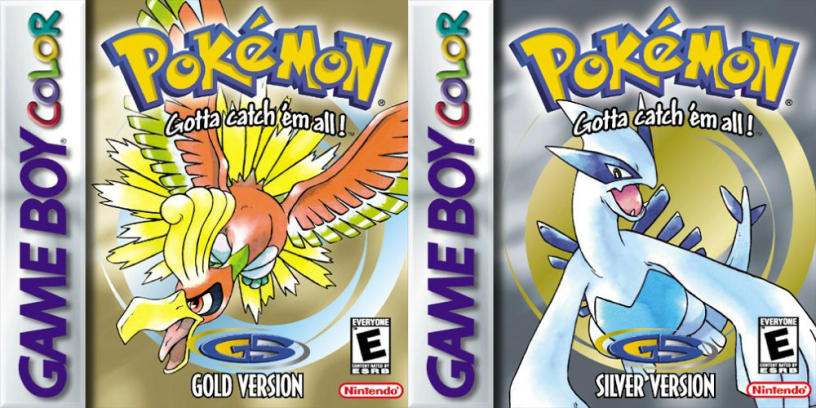
Unlike many of the later core titles, these acted as a semi-sequel to the games that came before them: despite featuring different protagonists to the original games, Gold and Silver followed up on many of Red and Blue’s remaining plot threads and included the world of the original games as a post-game area. They also established greater mechanical depth, expanding on the gameplay of the originals.
- Established the breeding mechanic, allowing players to breed for rare Pokémon and customize their stats
- Introduced Shiny Pokémon, adding another level of challenge for thorough collectors
- Included items for Pokémon to hold in battle, giving combat strategies an extra layer of depth
- Expanded on gameplay with new systems such as day/night cycles and weather effects
- Added the new Pokémon types Dark and Steel
Pokémon Crystal (2001)
This special edition of the Generation II games developed the plot of Gold and Silver further while adding extra post-game content.
- Introduced a female character option for the first time
- Added animated sprites for Pokémon
- Established the post-game Battle Tower, which was further developed in later titles
Pokémon Ruby and Sapphire (2003)
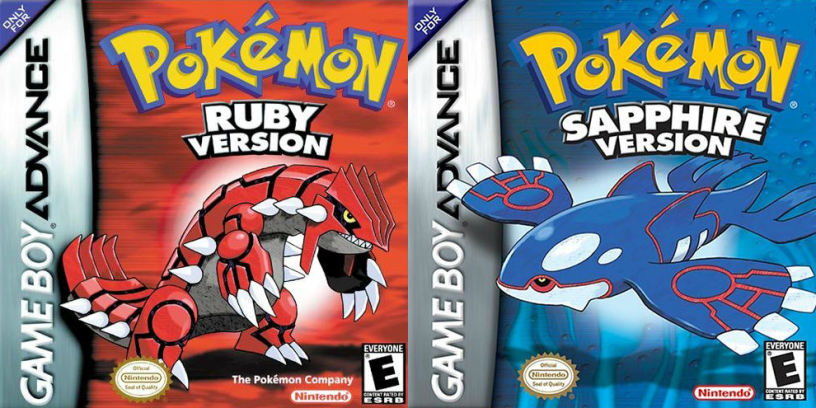
Despite their lack of backward compatibility, these third-generation games added a great deal of depth to the battle system. Ruby and Sapphire also added several activities beyond the typical battle experience, such as Pokémon Contests.
- Introduced Double Battles, now a central element of Pokémon tournaments
- Included greater differences between the two game versions, a trend that would continue with later games
- Established Pokémon Contests and Secret Bases
- Added Special Abilities, giving each Pokémon species more individuality in battle
Pokémon FireRed and LeafGreen (2004)
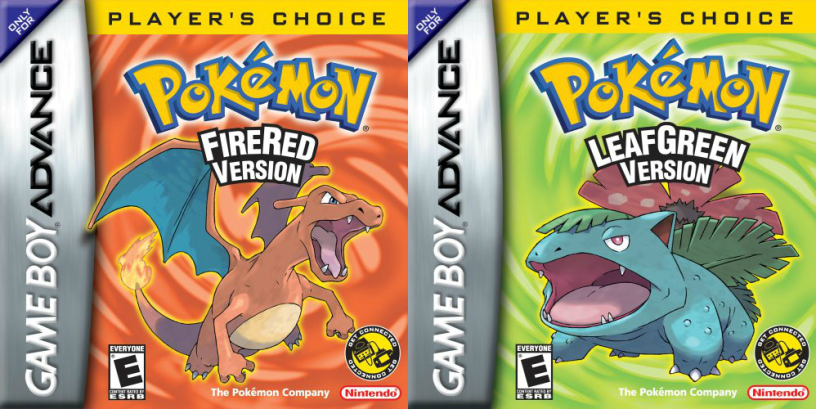
The first of many remakes, these games reference Red and Green (the first games released in Japan) rather than Red and Blue (the first games released internationally) in their titles. They added significant expansions to the maps of the original games, greatly expanding the post-game.
- Together with Ruby and Sapphire, established the National Pokédex, able to collect records on every Pokémon species in existence at the time
Pokémon Emerald (2005)
Emerald combined the best of both Ruby and Sapphire, along with gameplay improvements and new features in a similar vein to Yellow and Crystal.
- Added the Battle Frontier, giving players a more challenging and varied range of battle styles and mechanics.
Pokémon Diamond and Pearl (2007)
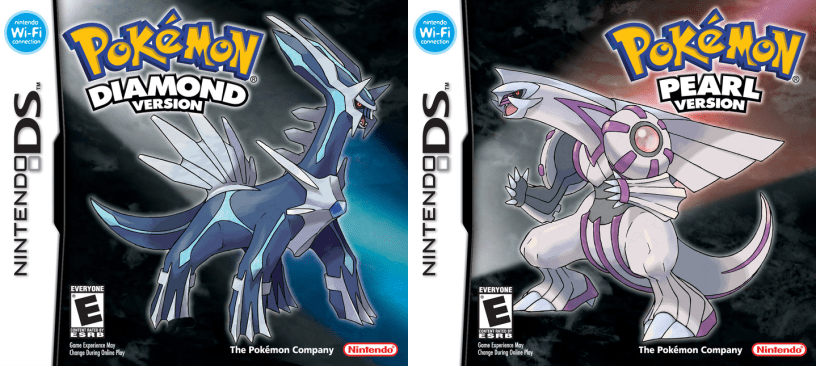
Generation IV came with a range of changes using the new capabilities of the Nintendo DS; this included a greater focus on multiplayer elements, including the ability to trade Pokémon via the internet. The addition of wireless functionality also helped these games to expand on features introduced in Generation III, such as Pokémon Contests and Secret Bases.
- Introduced the Global Trade System, a way to trade Pokémon with pretty much anyone in the world, among other new connectivity options
- Added the first 3D elements to the main series of Pokémon games, which had previously been two-dimensional and sprite-based
- Revamped the battle system, dividing moves into "special" and "physical" categories to allow a wider range of strategies
Pokémon Platinum (2009)
Another special edition, this game combined elements of Diamond and Pearl, continuing to build on their improved multiplayer experience.
Pokémon HeartGold and SoulSilver (2010)
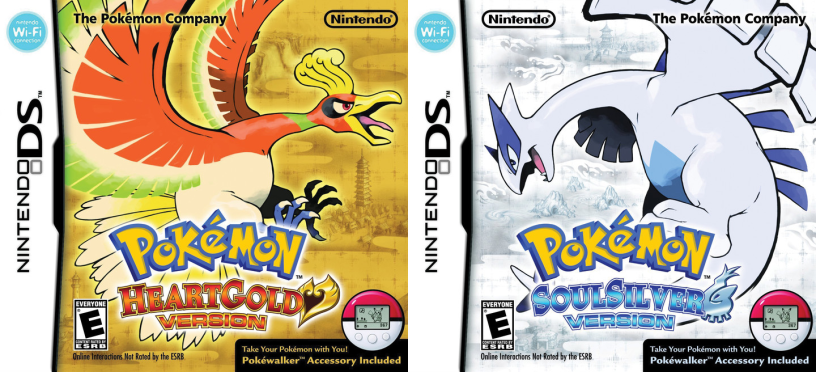
Remakes of Generation II’s Gold and Silver (while also including elements of Crystal), these games featured many unique additions, including new ways to interact with Pokémon throughout the adventure. While some of these elements were dropped in later games, they would return many years down the line in GO and Let’s Go.
- Expanded Yellow’s “following Pokémon” mechanic, allowing players to bring any Pokémon around with them
- Included the “Pokéwalker,” a peripheral that let players carry their Pokémon around even outside the game
Pokémon Black and White (2011)
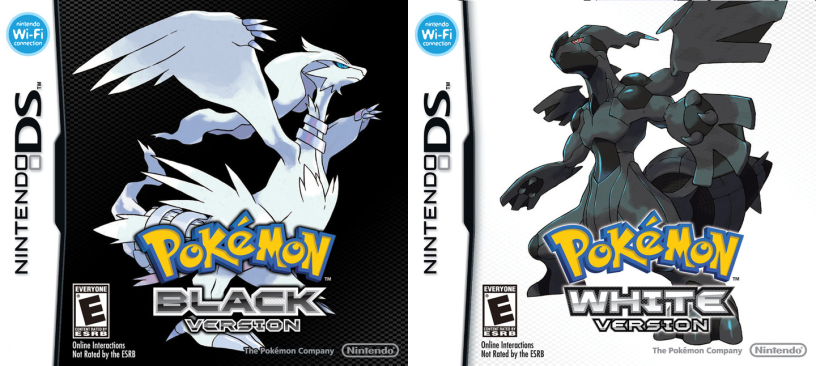
Generation V continued to add new multiplayer features making use of the DS’s wireless functions; these included the C-Gear, Entralink, and Dream World. It also featured an entirely new set of Pokémon, rather than using a mix of old and new characters as previous generations had done. With Black and White, the series also began to increase its focus on plot and characterization.
- Introduced a wide range of new wireless features such as new mini-games, as well as 3DS app compatibility
- Included areas that differed greatly depending on game version
Pokémon Black 2 and White 2 (2012)
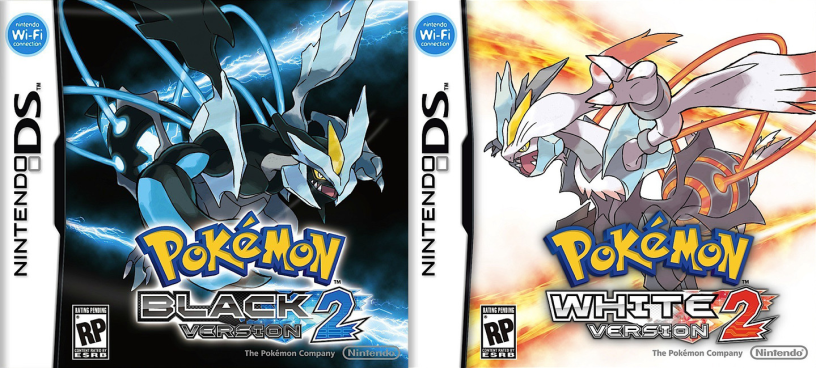
The first direct sequel games in the main series followed on from the plots of Black and White while greatly expanding the amount of post-game content. Many of the features introduced in these games, while well-received, did not carry over into later games.
- Added a difficulty setting to the games
- Included an achievement system, giving completionists even more content to collect
Pokémon X and Y (2013)

In Generation VI, Pokémon finally made the leap to 3D. X and Y introduced a wide range of new features, helped along by the greatly improved graphics of the 3DS.
- Added Pokémon-Amie, a mini-game letting players feed and play with their Pokémon
- Replaced the previous games’ strict grid-based movement to more fluid controls
- Introduced Mega Evolution, giving powerful new forms to familiar Pokémon and further changing the structure of competitive play
- Established player customization options such as hair, clothes, and skin color
- Added rideable Pokémon to help the player explore, as well as keeping Hidden Machines to help overcome obstacles
- Introduced an 18th Pokémon type, Fairy
Pokémon Omega Ruby and Alpha Sapphire (2014)
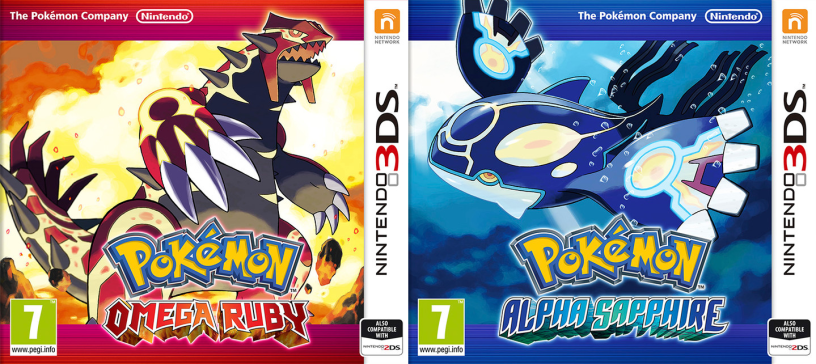
The long-awaited remakes of Ruby and Sapphire adapted many of X and Y's new features for Generation III's locales while also establishing the "multiverse" in which the Pokémon games take place.
Pokémon Sun and Moon (2016)

Generation VII broke away from several of the typical Pokémon conventions, such as the traditional “Pokémon Gym” formula. These were replaced with more varied “trial” challenges, and the associated Hidden Machines were removed in favor of rideable Pokémon.
- Added new regional forms to classic Pokémon, changing their types, designs, and abilities
- Introduced powerful Z-moves, usable only once per battle
- Added Trials, Trial Captains and Totem Pokémon as a replacement for Pokémon Gyms
- Included the ability to send Pokémon on missions and receive special rewards
Pokémon Ultra Sun and Ultra Moon (2017)
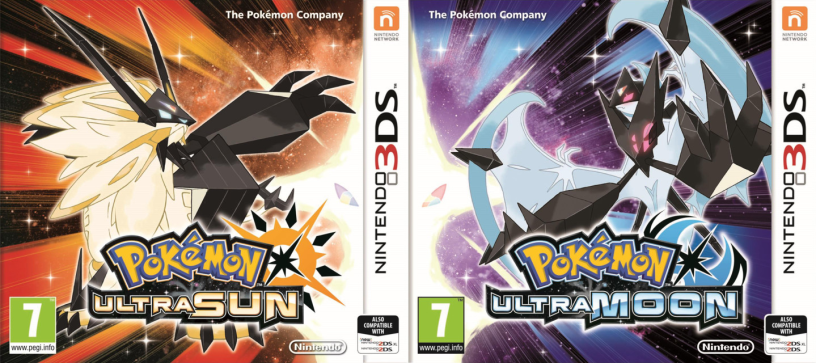
Rather than a single “director’s cut” as in previous generations, Sun and Moon were given “retellings” in the form of these two games. Being the last handheld Pokémon games, these were designed to be a celebration of the franchise, featuring many characters and legendary Pokémon from each of the previous games.
Pokémon Let’s Go! Pikachu and Eevee (2018)
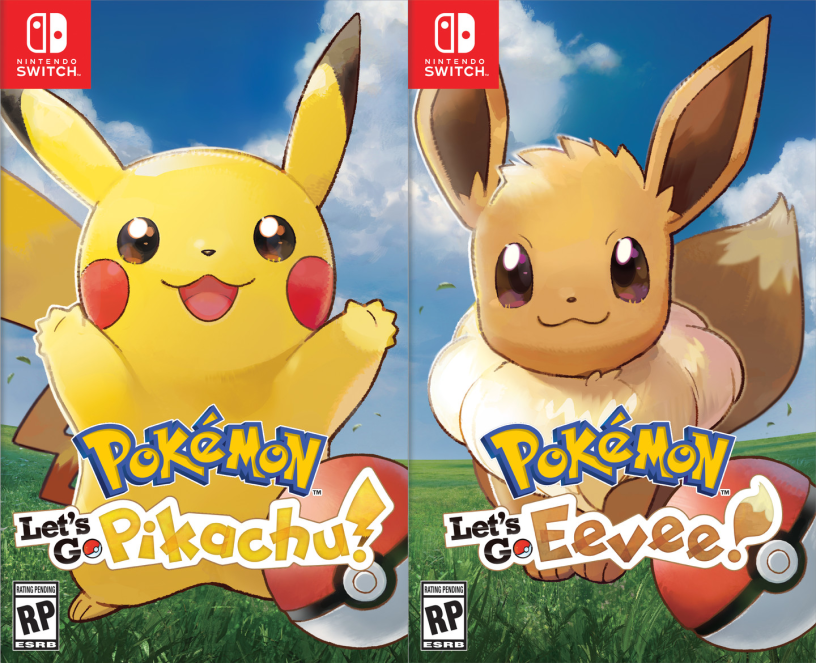
Combining elements of Red and Blue, Yellow, and GO, these were the first Pokémon RPGs on the Nintendo Switch. These games featured a simplified battle and capture system to make them more accessible to new players, and mainly based their wild encounters on those of Pokémon GO. Several elements from HeartGold and SoulSilver, such as “following Pokémon,” finally made their return in these installments.
- Included Pokémon GO compatibility, along with using Pokémon GO mechanics for wild Pokémon battles
- Allowed access to the player’s stored Pokémon from anywhere in the game
- Replaced random wild Pokémon encounters with on-screen appearances
- Added the option for two players to play simultaneously using Joy-Cons
Pokémon Sword and Shield (2019)
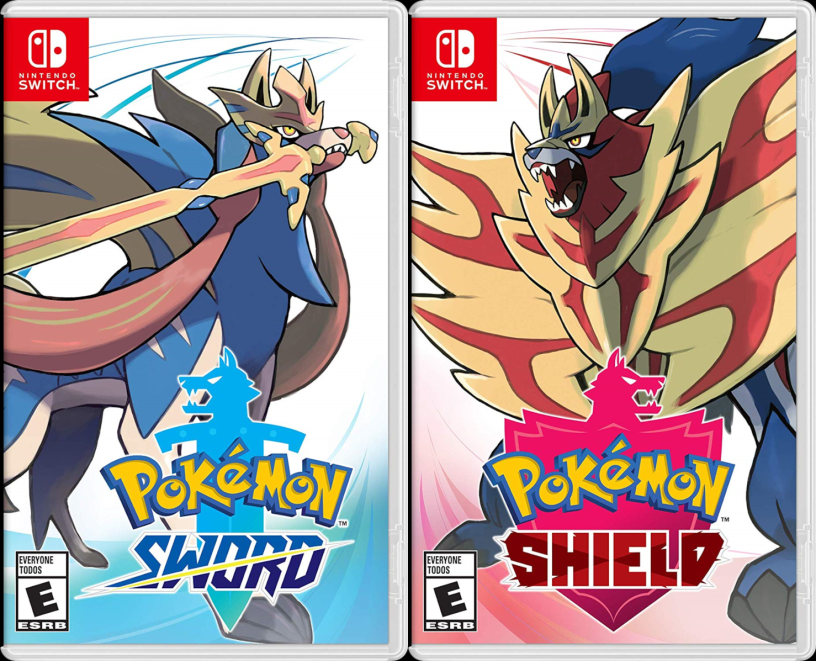
These titles commenced Generation VIII, the first to debut on the Nintendo Switch. This change in hardware has allowed for evolutionary graphical overhauls and open-world exploration. Even so, Sword and Shield saw the return of several classic Pokémon mechanics not included in Let’s Go (such as the wild battle system seen in previous titles) as well as some features left out of Sun and Moon (including the Gym Leader challenge). However, these games didn't include every Pokémon from previous generations.
- Included the Wild Area, a more dynamic open-world locale
- Added Dynamaxing and Gigantamaxing, allowing Pokémon to temporarily grow to enormous sizes and increase their power in battle
- Introduced Max Raid Battles, letting groups of players team up against gigantic boss Pokémon
- Added “Pokémon Camp,” building on Pokémon-Amie and providing new ways to interact with your Pokémon
The Isle of Armor and The Crown Tundra (2020)
In lieu of a game that synthesizes the best of the preceding twin entries, these expansions became available six months apart on the Nintendo Switch eShop and added two entirely new frontiers of open-world exploration in addition to Sword and Shield's Wild Area.
- Over 200 catchable Pokémon from previous generations were added to Sword and Shield's original 400, with new Pokédexes for each area (rather than a complete National Pokédex, as in previous games)
- New legendary Pokémon were also added alongside relatively involving story arcs featured as post-game content
- Dynamax Adventures offered a new way to play Max Raid Battles in a challenging stepping-stone progression capped by the chance to catch legendary Pokémon from previous generations.
Pokémon Brilliant Diamond and Shining Pearl (2021)
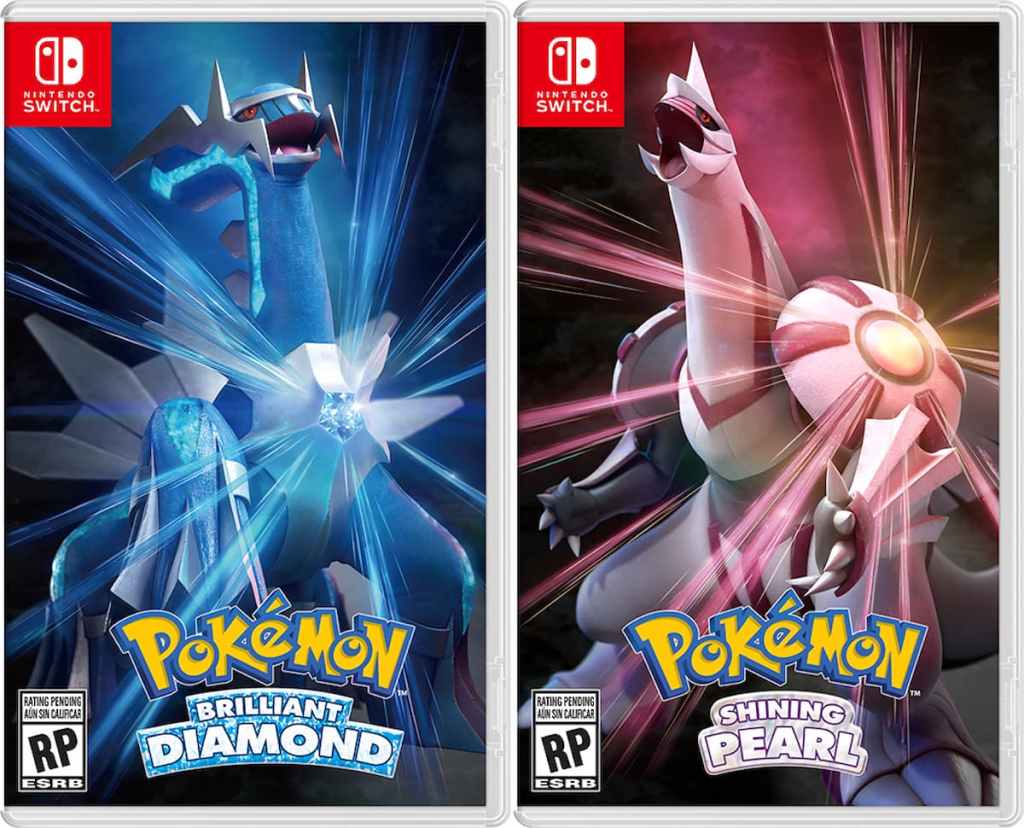
These remakes from the 2006 originals were faithfully executed by ILCA and became the first Pokémon main games not primarily developed by Game Freak. Not only did ILCA bring a chibi sheen to enliven the look for Switch hardware, but they added post-game content with challenging legendary encounters. These games have proven true to the legacy of the originals as the most difficult main Pokémon games.
- Ramanas Park was a new post-game that required rare gemstones for the chance to battle and capture legendary Pokémon
- The Underground from the original was revamped and renamed the Grand Underground, adding visible Pokémon encounters (leveled to the average of your team) in hideaways themed to type
- Upgrades such as auto-save and the fact that HMs no longer needed to be taught to Pokémon improved quality-of-life and convenience
Related: Check out the Better Pokemon Starter List on our sister site, Upcomer.
Pokémon Legends: Arceus (2022)
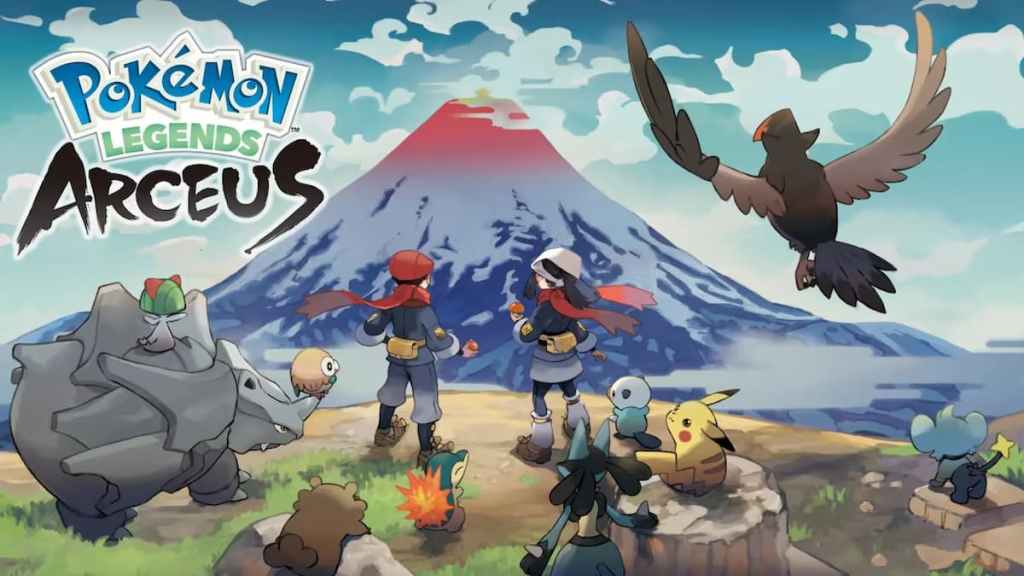
The last main game of Generation VIII evolved and deepened the origin of the relationship between people and Pokémon in its presentation of the Hisui region—the Sinnoh of the past—as vast, adjacent open-world areas. Pokémon Legends: Arceus gameplay was similar to that in the open-world areas of Sword and Shield but more streamlined.
- Seamless switching between modes of exploration among visible Pokémon to traditional battle-and-capture gameplay naturally served the main goals of field research and observation to complete the first-ever Pokédex
- New item-crafting mechanics, moveset operations, and numerous main and sidequests organized within the map lent an epic scope
- Overall, a sense of "atmosphere" in a Hisuian world that could be at turns thrilling and calming breathed new life into a tried-and-true formula
Judging from how these main Pokémon games have evolved right alongside their fictional characters, we expect the franchise will proceed on the same trajectory of coming back and improving. If there's anything this Pokémon history can teach us, it's that great games can get even better with the right balance of consistent innovation and proven gameplay hallmarks.
